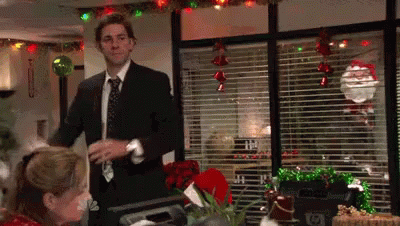The Christmas debate you didn’t know you needed.
Sharpen your kids' minds and give them the edge they need— from the classroom to the future job market.

Hurrah! The countdown to the end of term is ticking down, and the holiday cheer is almost here!
Last weekend, whilst we were wrapping up final assessments, concerts and projects, world leaders were wrestling with an agreement on the global plastic pollution treaty in Busan.
Despite their efforts, the talks collapsed.
So, while the world politicians struggle to reach consensus, why not spark your own debate?
After all, the students of today will be the innovators of tomorrow. They’ll need to solve the very problems being tackled in this treaty—whether by designing advanced recycling systems or inventing sustainable plastic alternatives.
This is your chance to encourage critical thinking, curiosity, and problem-solving—skills more valuable than ever.
And the best part? There’s no single “right” answer—just an opportunity to explore the facts and develop informed opinions.
Two Sides of the Debate
Cut Plastic Production: The Environmental Argument
Most plastics are not effectively recycled—only 6% in the U.S. gets recycled properly.
Microplastics are everywhere—deep oceans, Arctic ice, and even in our bodies.
Helpful resources:
- Most plastics are recyclable - the lie - Scientific American
- Analysis of sources of ocean plastic pollution - Inside Ecology
- Blueprint for action on plastic pollution - WWF
Innovation and Circular Economies: The Smart Use Argument
Plastics are vital for healthcare, tech, and textiles—outright bans could cause major disruptions (Scientific American).
Countries like Denmark and the Netherlands excel in industrial symbiosis, where one company’s waste becomes another’s resource.
Helpful resources:
- Learn about Denmark’s Kalundborg Symbiosis in this podcast - Ellen MacArthur Foundation
- How fleece microfibres contribute to pollution - Earth.com
- Circular waste management systems - Nature
You might want to find props around the house to make your points more compelling:
- Tea Bags: Many tea bags have plastic sealing, making them non-biodegradable.
- Glitter: Often made from tiny plastic particles—yes, it’s contributing to microplastic pollution.
- Fleece: Your warm, cosy fleecy socks or jumper? It’s made from polyester, the same material as plastic bottles.
- Toothpaste Tubes: Most are lined with plastic to keep them flexible and waterproof.
Why bother?
- Critical Thinking: It's about evaluating evidence, not just memorising facts. This helps kids think deeper and become better problem-solvers.
- Confidence Building: Debates help kids gain the confidence to stand out, whether in school or in future jobs.
- Open Discussion: No matter which side kids pick, kids learn how to present and defend an opinion in a respectful, informed way.
Whether you're in class, on a long road trip, or snuggled up on the sofa, this debate will give your child a chance to practice these skills in a safe, supportive environment where the goal is to be heard—not to have all the answers.
Worried that your family Christmas dinner will turn into this?

Make sure you check out these debate rules for some helpful guidelines:

If you’re looking to help your child stand out in a noisy world, nothing beats learning to argue with empathy, logic, and passion.
Sharpen your kids' minds, prepare them to solve real-world problems and give them the edge they need—whether in the classroom or the future job market.
Bookmark this and make The Great Plastic Debate the centrepiece of your holiday conversation this year.
Happy debating!
Nici
P.S. Share your debate outcomes with me! Did the family side with cutting plastic or innovating for smarter use?



